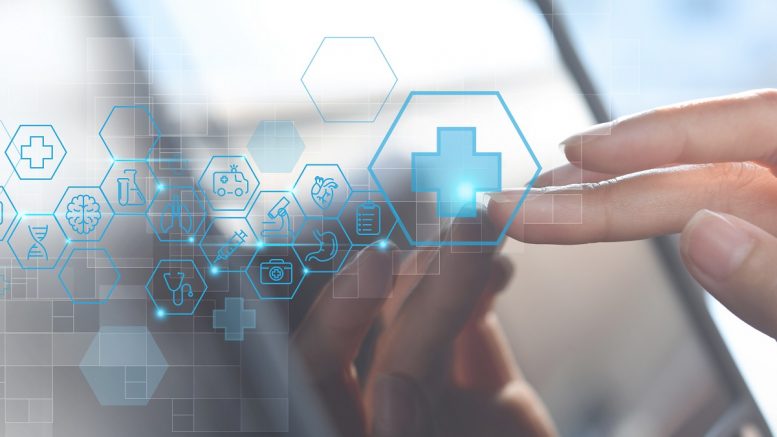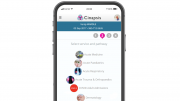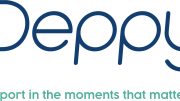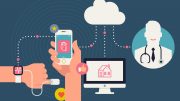The Care Quality Commission reported last year that the NHS is gridlocked and unable to provide acceptable standards of care to patients. As a doctor who worked in the NHS for 20 years, I can confirm that we are experiencing some of the most intense pressures we have ever seen, at all points in the system. From GP appointments to outpatient clinics, we’re seeing some of the longest wait times, and with the effects of winter bedded in, the situation has worsened. More recently, the stripping of NHS tech funding threatens to stifle innovation when we need it most. That said, it’s not an entirely negative story.
As we all know, the pandemic opened our eyes to new ways of working, and accelerated the delivery of new models of care, including digital first approaches. This has enabled us to reach patients in new and sometimes profound ways. At the same time, it revealed just how deep health inequality runs, and addressed how important it is to continue to experiment with new approaches to care so we can improve the health of as many patients as possible.
Extracting the most value from every clinical interaction
As a nephrologist, I care for a lot of patients with chronic conditions who will need to frequently engage with healthcare services throughout their lifetime. These patients have multiple points of interaction with healthcare service where they may have to face long waiting times. So, it’s important that we consider how we can tailor our interactions with patients at every step, to extract maximum value out of each appointment and, where possible, reduce the number of necessary hospital visits.
For me, a person who is engaged in their care and taking part in shared decision making about their condition and treatment is crucial to improving their ability to self-manage and improve their overall health outcomes, hence reducing their need for overwhelmed health services.
Take the example of a person who is newly diagnosed with chronic kidney disease (CKD). We need to do all we can to help this person to understand how they can reduce their risk of stroke, heart attack or worsening of kidney function. Enabling people to understand more about their health in an accessible way is one method of helping this to happen.
At Royal Berkshire NHS Foundation Trust, we use a digital avatar-led educational tool which we developed with Cognitant and is shared with patients via a health information prescription. The programme, co-created with patients, patient advisory groups, GPs, dieticians, pharmacists and renal specialists, guide people through information to help them better understand and manage their condition.
Educational resources, and digital tools, like this enable people to consume information about their health whenever they need it, helping them to remain engaged at every stage of their care and be informed on their condition. It also helps them to come to their appointments better prepared for valuable discussions with their clinicians. Evidence tells us that patient involvement improves outcomes, and this underpins the approach to personalised care.
Using digital tools to personalise health information
So how do we ensure that this education is accessible and impactful? One way is by personalising the health information using digital tools. People like to consume and digest information in many different ways, and health information is no different. At my trust, we’ve taken the opportunity to really explore how people consume the information they’re given about their condition and understand the way in which this information is delivered. We’ve found that many people actually prefer digital tools such as video or virtual reality, as it enables them to interact with the information in ways that suit them.
In Berkshire we have a high proportion of people who do not speak English as their first language, with more than 150 languages being spoken in Reading alone. Imagine one of these people is the person I just described that’s recently been diagnosed with CKD. For them, a leaflet written in English is probably not going to be the most relevant or useful way of educating them about their health and how they can manage their condition. That’s why it was important to us that we culturally adapt and translate our educational resource into 4 of the most spoken languages amongst our patients – Nepalese, Punjabi, Polish and Urdu.
Improving accessibility and removing barriers
We know that different people learn in different ways. Making use of visual and interactive digital tools therefore helps to improve the accessibility of health information to more people We initially trialled the use of 360 degree video and avatars with CKD patients, providing them with 3D images of organs such as the kidneys, so they could visualise how their kidneys work and the impact that their condition was having on them.
With avatars, people can watch interactive videos where their condition is explained by a person on screen, rather than having to read lots of text. These methods can also help to make information more culturally resonant as it enables the content to be translated and culturally adapted more easily.
We’re now seeing more use of avatar-led educational programmes for different disease conditions beyond CKD, including arthritis, stroke and diabetes, both in the NHS and around the world. These new ways of providing health information are not only desired by patients, but conform to new models of care, such as virtual wards and other forms of remote monitoring. Very importantly, by helping patients to be better educated on their condition, they are able to be in greater control of their health, making it less likely that their health will deteriorate while they are waiting for appointments and reducing their overall demand on the healthcare system.
Fostering shared decision making for a sustainable future
Patient education is, of course, not the sole solution to relieving pressure on the NHS. I recognise this is one small step but I am a great believer in the principle of aggregation of marginal gains – from our small steps together with each of our patients change can happen and we can extract more value out of the system. I’ve seen it first hand in my own practice. The impact that accessible, personalised health information can have on patients is transformational; it helps to build trust between patients and clinicians at each and every interaction, fostering shared decision making. While the pandemic has enabled us to deliver care in new ways, it has also opened up how we engage with our patients on a more intimate level too. Empowering people to better self-manage through immersive, personalised digital education, adapted to a person’s language and learning preferences offers one positive solution for the future of a more sustainable health service.
By Dr Emma Vaux OBE, Medical Associate Director of Patient Safety and Consultant nephrologist, Royal Berkshire Hospital NHS Foundation Trust





